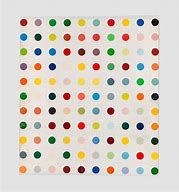Drawing the Hirst spot painting with python
 KELVIN CHI-JEKWU UGWU
KELVIN CHI-JEKWU UGWUYou might have heard of the famous Damien Hirst spot paintings that sold for a huge amount of money, what if you could make them using Python on your local machine.

Requirements
You need to have Python installed in your machine, an IDE(Integrated Development Environment) such as Pycharm or the default IDE that comes with Python. You can install Python for your operating system from www.python.org and pycharm IDE from PyCharm: the Python IDE for Professional Developers by JetBrains
Basic knowledge of python
The modules need are turtle, random and colorgram
turtle and random are preinstalled while you can install colorgram by running this command
pip install colorgram.pyin your command line
What are the modules used for?
Turtle is a python GUI(graphical user interface), for more details and how to use, visit the python turtle page at [turtle — Turtle graphics — Python 3.11.4 documentation]
Random is a python module that can be used to pick randomly from a range of numbers, integer, list etc. Read more on Python | Random Module | Codecademy
colorgram is a python module that is used to extract colors from an image in rgb or hsl format. visit colorgram.py · PyPI for documentation
Writing the code
Open up the IDE of your choice
import turtle, random, and colorgram
import turtle import colorgram import randomset up the turtle and screen object
# create a turtle object tim = turtle.Turtle() # create the turtle screen screen = turtle.Screen()The
.exitonclick()Screen method will be called to prevent the screen from disappearing before we get to see what is going on.# all your code should be written above this method call screen.exitonclick()The turtle object will be given some functionalities to suit the project we are building
# This will increase the speed of the turtle as it moves tim.speed('fastest') # the turtle object should an arrowhead like shape on screen, and the method below will hide it. tim.hideturtle() # the turtle's default position is the middle of the wind, w'll move it to the bottom left corner of the window tim.setheading(225) tim.forward(320) # set the direction to right tim.setheading(0) # This is going to prevent the turtle from leaving traces as it draws the spot painting tim.penup() # changes the default colormode to 255 screen.colormode(255)The next step is getting the needed colors for the project, to this effect we will extract the colors in any of the damien hirst paintings to make ours, you can download any hirst image for this purpose
# this extracts 20 colors from the image and return a list of colorgram objects colors = colorgram.extract('image path', 20) list_of_colors = [] rgb = [] # This loops through the object list to get all the rgb color numbers for color in colors: r = color.rgb.r b = color.rgb.b g = color.rgb.g new_color = (r, g, b) list_of_colors.append(new_color)Finally we are going to draw our hirst painting .
# this variable holds the number of dots in our painting no_of_dots = 100 # for the number of the dots for dot_count in range(1, no_of_dots+1): # draw a dot of size 40, and pick a random color from the list of extracted colors tim.dot(40, random.choice(list_of_colors)) # move it right by 60 pixels tim.forward(60) # for every 10 dots, turn the turtle and start all over. if dot_count % 10 == 0: tim.left(90) tim.forward(50) tim.left(90) tim.forward(590) tim.setheading(0)
Conclusion
Hope you enjoyed building this with me, thanks for following true.
I would love to hear from you.
Subscribe to my newsletter
Read articles from KELVIN CHI-JEKWU UGWU directly inside your inbox. Subscribe to the newsletter, and don't miss out.
Written by
